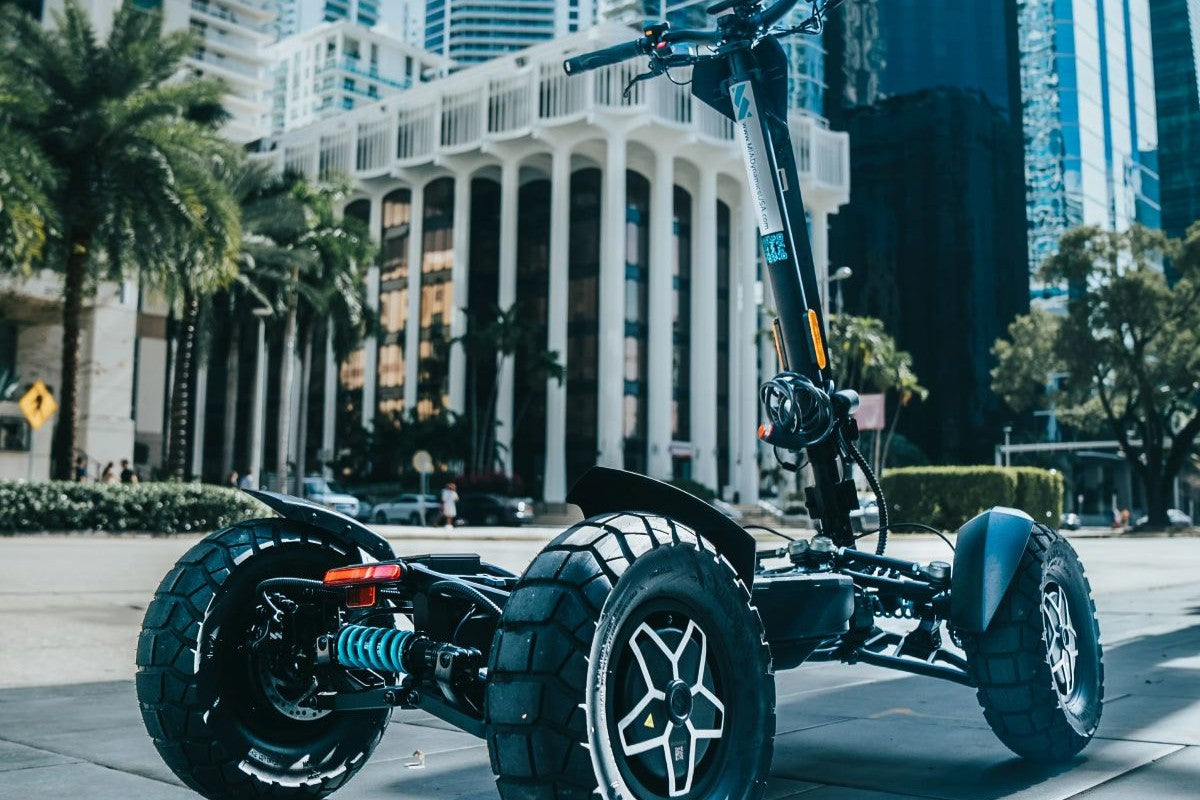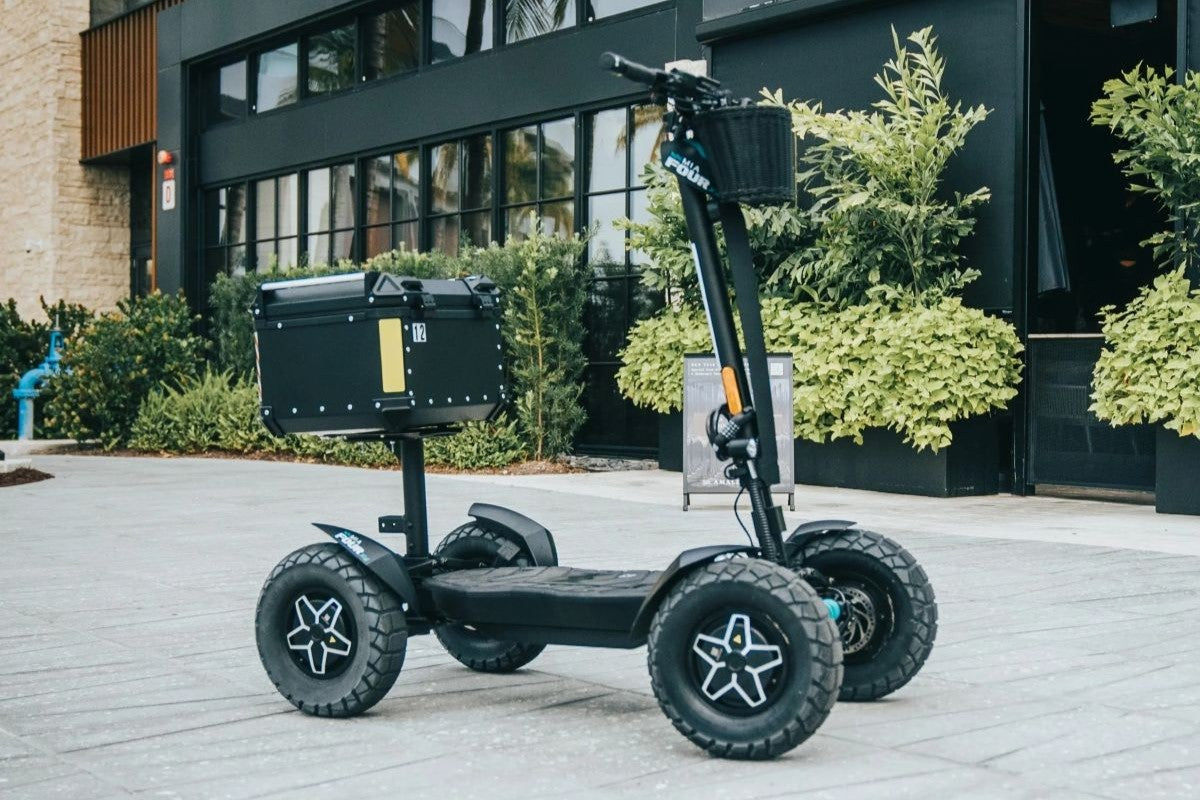When it comes to off-road performance, people tend to get loud about what they think works best. Some swear by the roar of a gas engine. Others are making the quiet switch to an Electric ATV Scooter. And if you’re stuck in the middle trying to figure out what actually fits your needs, you’re not alone.
Both options have serious power behind them. But how they deliver it, how much they cost to run, and what kind of ride you get in return? That’s where things start to separate.
If you’re considering an electric ATV scooter, or debating between gas and electric for your next all-terrain machine, here’s what you need to know broken down without the fluff.
Power and Performance
Gas-powered ATVs are built around internal combustion engines, which offer a familiar riding experience. You get high torque, engine sound, and the ability to handle steep inclines and variable terrain. These machines are well-known for long-distance capability and power on demand especially in open trail environments or agricultural use.
Electric ATV scooters, on the other hand, deliver torque instantly. There’s no delay between throttle input and response. This can make them feel more responsive at low speeds and more predictable in technical situations. On rough or uneven terrain, especially at slower speeds, the consistent power output is a real advantage.
That said, many electric models do sacrifice top-end power in exchange for efficiency and control. If you're riding in areas where high speeds or heavy hauling are the norm, gas may still have the edge.
Verdict:
Gas gives you that classic feel. Electric gives you more control, quicker acceleration, and less to manage.
Maintenance and Repairs
Gas engines come with a long list of regular maintenance needs. Oil changes, spark plug replacements, air filter checks, and transmission servicing are all part of the ownership experience. These machines also have more mechanical components that wear down over time, adding to long-term costs.
Electric ATVs have fewer moving parts. There's no oil to change, no spark plugs, and no emissions systems to worry about. Regular maintenance typically includes brake pads, tires, and cleaning. Some models may need battery checks or firmware updates, but overall, maintenance is lighter and more cost-effective.
However, battery degradation over time is a factor. While most high-quality batteries are built to last several years, replacement costs can be high depending on usage.
Verdict:
Electric wins here. Fewer parts, fewer problems, and less maintenance over time.
Fueling and Charging
Gas is everywhere. But prices go up, and those trips to fill up start to add costs to every ride.
Electric scooters charge at home. Plug in after a ride, and you’re ready to roll again in a few hours. No extra trips, no gas smell, and no last-minute fuel runs when you're halfway to the trailhead.
Models like the MIA Four X4 come with swappable battery setups, so you can carry a backup and swap it out mid-day if needed. That’s a big deal if you’re doing long-haul rides.
Verdict:
Electric keeps things cleaner and more convenient, especially if you're tired of planning around gas runs.
Noise and Ride Feel
Some riders love the sound of an engine. Others don’t want to hear it all day. This one’s personal, but if you ride near neighborhoods, trails with restrictions, or anywhere that values low noise, electric is the better choice.
It also changes the way you feel the trail. Without engine vibrations and exhaust, you focus more on the terrain under your feet and how your body moves with the machine.
Verdict:
Electric brings a smoother, quieter ride. Gas brings more sound and vibration. Choose based on what you want to feel (or not feel) on the trail.
Environmental Impact
There’s no question here. Gas-powered ATVs put out emissions. They burn fuel, release exhaust, and leak fluids when something’s off.
Electric ATVs don’t.
If you care about riding clean and minimizing your environmental impact, electric is the clear choice. You’ll still need to be responsible with battery disposal, but your footprint stays smaller from day one.
Verdict:
Electric leads the way in sustainability.
Cost Over Time
Initial costs can vary widely across both categories. Some electric models are more expensive up front, especially those with larger batteries or higher-end features. Gas ATVs may be more affordable to buy initially, depending on the brand and build.
But operating costs are where things shift. Gas prices fluctuate and add up quickly for frequent riders. Maintenance costs for oil changes, engine servicing, and fuel system repairs can also be substantial.
Electric models typically have lower operating costs. Charging is cheaper than filling up with fuel, and maintenance needs are minimal. Over several years of regular riding, the total cost of ownership often tips in favor of electric assuming battery health remains strong.
Verdict:
Electric saves more long-term especially if you ride often or use your ATV for work.
So Which One’s Better: Electric ATV Scooter or Gas-Powered?
There’s no one-size-fits-all answer. If you're riding long distances, hauling equipment, or need raw power in remote areas, gas-powered ATVs still hold their place.
But for riders who prioritize control, simplicity, lower noise, and reduced upkeep, an electric ATV scooter could be the better fit especially for local trail riding or recreational use.
If you’re curious what that looks like in action, the MIA Four X4 offers an electric ride built specifically for performance and terrain responsiveness. It’s compact, rugged, fully electric, and designed for control, not compromise.
Ready to change how you ride? Start with something that fits the way you actually move. Check out the MIA Four X4 and see what your next ride could look like, minus the noise, mess, and maintenance.




Leave a comment
This site is protected by hCaptcha and the hCaptcha Privacy Policy and Terms of Service apply.